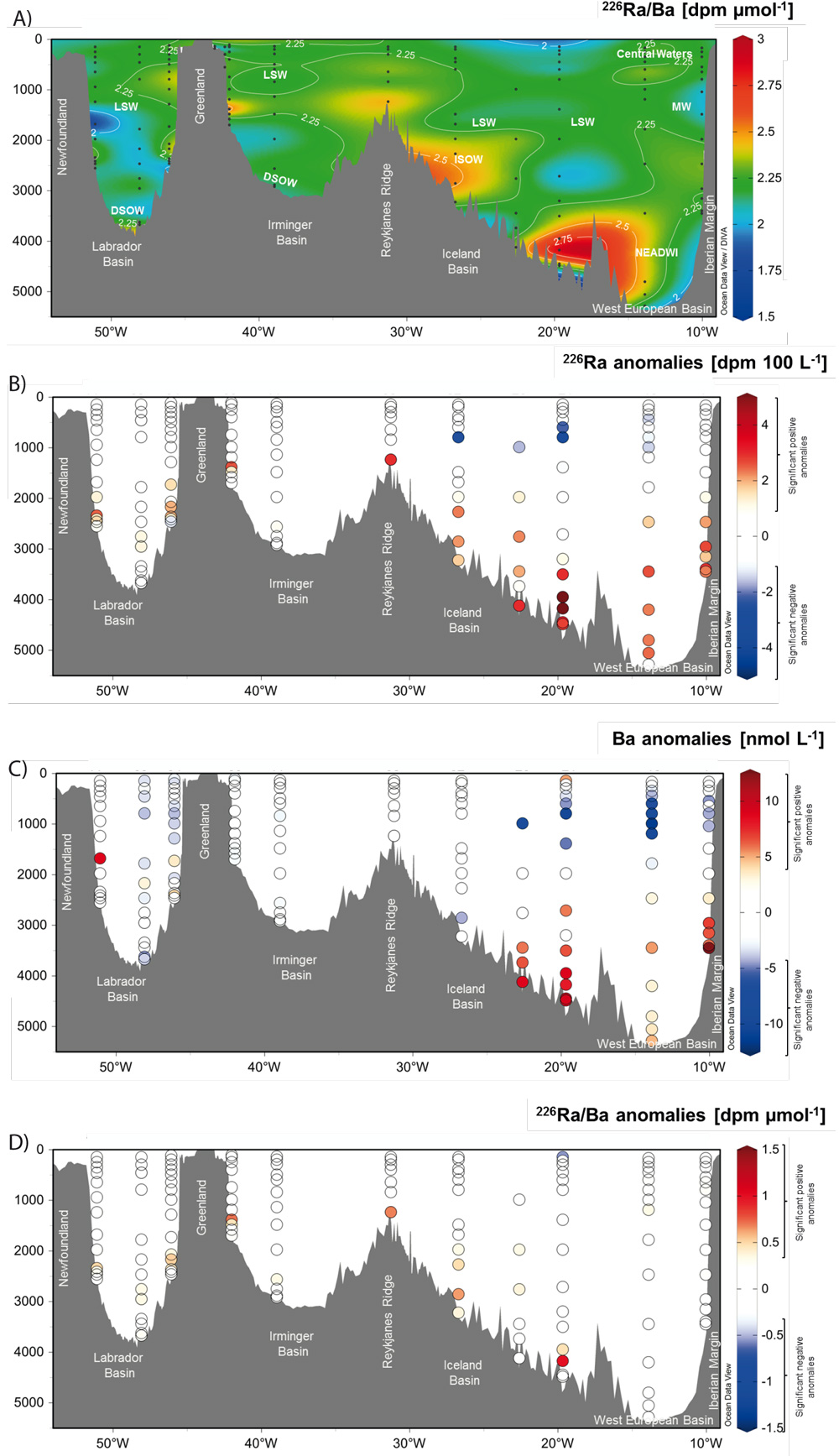Coupling and decoupling of barium and radium-226 along the GEOVIDE GEOTRACES section
Because radium-226 (226Ra) and barium (Ba) are both alkaline earth metals and thus display similar chemical behaviours, studying their fate in contrasting environments is of prime interest. With this aim, Le Roy and co-workers (2018, see reference below) realised a high-resolution description of the distribution of these tracers along the GEOVIDE section (GA01, see section map here). Using an optimum multi-parameter analysis of their data, they figured out that:
– both tracers can be considered as conservative of water mass transport in the deep open ocean part of the section;
– non conservative and decoupled behaviours are observed at the ocean boundaries, namely:
- in the eastern part of the section, the deepest waters (North East Atlantic Deep Water) display high Ba and 226Ra concentrations, which could reflect either an accumulation in this “old” water mass or diffusion from the sediment below;
- contrastingly, depletion of both tracers in the upper layers of the West European basin likely reflects biological stripping;
- at the land-ocean contact, as for example close to the Greenland and Newfoundland coasts, marked decoupled behaviours reflect the different main input sources of both tracers (rivers for Ba, sediment for 226Ra).

Figure: Distribution of dissolved 226Ra/Ba ratio (a) measured along the GEOVIDE section and the difference between the measured concentrations and those calculated by the optimum multiparameter (OMP) analysis for 226Ra (b), Ba (c) and 226Ra/Ba ratio (d) along the GA01 section. Positive anomalies (in Red) reflect recent tracer addition, while negative ones (in blue) reflect recent tracer removal. Station numbers are found above the panels. Click here to view the figure larger.
Reference:
Le Roy, E., Sanial, V., Charette, M. A., van Beek, P., Lacan, F., Jacquet, S. H. M., Henderson, P. B., Souhaut, M,. García-Ibáñez, Maribel I., Jeandel, C.,Pérez, F., F., Sarthou, G. (2018). 226Ra–Ba relationship in the North Atlantic during GEOTRACES-GA01. Biogeosciences, 15(9), 3027–3048. http://doi.org/10.5194/bg-15-3027-2018
